Light, jiggly, and fluffy, Japanese Cheesecake (Soufflé Cheesecake) is seriously the most delicious dessert to serve a crowd. It has the melt-in-your-mouth combination of creamy cheesecake and airy soufflé. A second serving (or more) is a guarantee!
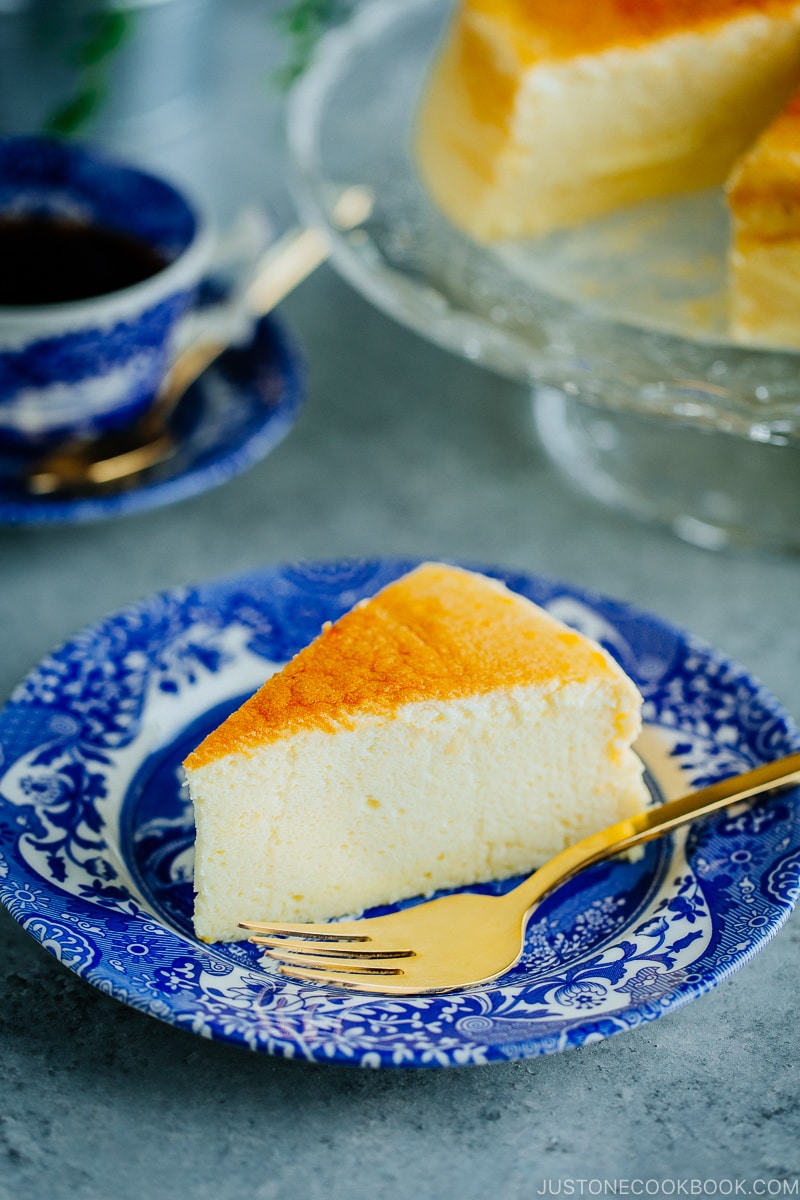
Japanese cheesecake (also goes by soufflé cheesecake) is a glorious dessert known for its ultra-creamy, super luxurious, slightly tangy flavor and airy, soufflé-like character. It has swept the food world by storm and almost every dessert fanatic goes wild for it.
Why is it so popular? What’s the difference between Japanese cheesecake and regular cheesecake? For a start, I think it has the ideal texture that appeals to everyone. With elements of both a rich velvety custard and a cottony sponge cake, the dessert simply hits all the right notes. It is not heavy and a lot less sweet than typical Western-style cheesecakes. Even those who are not into cheesecake will fall head over heels for this delicious treat.
Here, I’ll show you how to make the best Japanese cheesecake and we’ll cover these topics:
- What (exactly) is Japanese cheesecake
- A little background on cheesecakes in Japan
- Ingredients & equipment you’ll need
- Helpful tips & tricks
The recipe, while having several different steps, is simple enough to execute. Let’s get started!
What is Japanese Cheesecake?
This particular Japanese cheesecake recipe is a soufflé-style cheesecake that incorporates whipped egg whites in the cake mixture and is baked in a bain-marie (water bath), which results in its characteristically light and fluffy texture. Yes, it is basically the cheesecake version of the Japanese soufflé pancakes!
As there are a few varieties of cheesecakes in Japan, we call this cheese soufflé or soufflé cheesecake. Outside of Japan, however, it becomes synonymous with the generic “Japanese cheesecake”. Because of its unique texture, it is also called jiggly cake or Japanese cotton cheesecake. I agree, that’s a lot of names for a cheesecake!
Cheesecakes in Japan
While this has become the de facto ‘Japanese cheesecake’, I do want to mention that there are 3 main types of cheesecakes available in Japan:
- Baked cheesecake (ベイクドチーズケーキ)
- Rare cheesecake (レアチーズケーキ)
- Soufflé cheesecake (スフレチーズケーキ)
Baked cheesecake is the typical cheesecake. It has eggs, cream cheese, heavy cream, and flour and it’s baked in the oven. Some may have a biscuit crust on the bottom, and some don’t.
Rare cheesecake is the “no-bake cheesecake”. The cream cheese and heavy cream are mixed with gelatin or lemon juice, then poured over the biscuit crust, and cooled to set inside the refrigerator. Eggs are not used in this version. This type of cheesecake is often served with berries or other types of fruits.
Soufflé Cheesecake is the one we’re making today and originated in Japan. The technique is created by Yasui Juichi (安井寿一), a pastry chef at the patisserie of the Plaza Hotel.
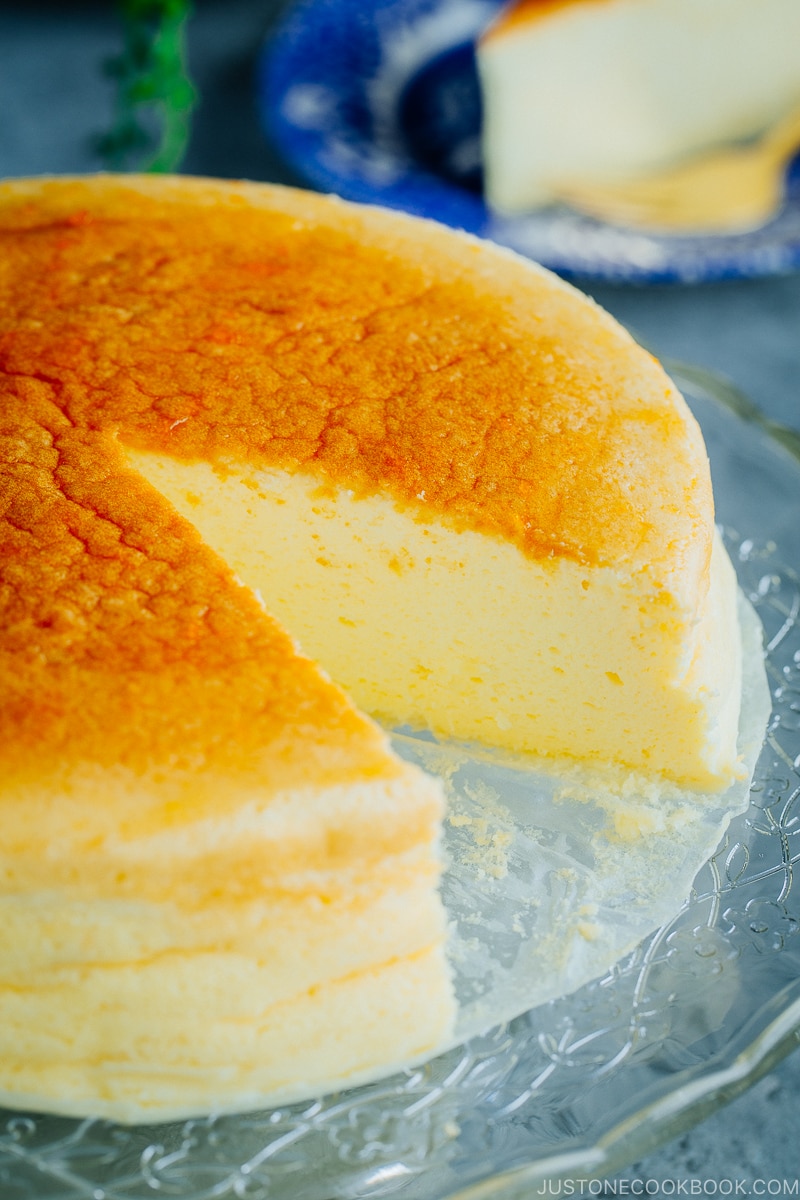
How to Make the Best Japanese Cheesecake
Ingredients You’ll Need
First, let’s go over the ingredients and equipment you will need to make this amazing cheesecake. I wrote this section so it’s helpful for beginner bakers. If you bake often, please skip this section.
1. Unsalted butter: When a baking recipe calls for unsalted butter or is written as just “butter”, that means the salt is not required. As baking is chemistry, I recommend using only unsalted butter.
2. Eggs: An American large egg is about 50 grams without shell (56.7 g with shell).
3. Cream Cheese: Buy two Philadelphia Original Cream Cheese 8 oz. boxes instead of the round container type. You will need one full box (8 oz.) and 2.5 oz. from the second box (there is the measurement on the package in case you don’t have a kitchen scale).
4. Heavy (Whipping) Cream: Heavy cream or heavy whipping cream is the richest type of liquid cream with a fat content of at least 36%. You can also go light and use whole milk in this recipe.
5. Granulated Sugar: I often receive questions about sugar whether you can use a substitute or reduce the amount of sugar. As I mentioned before, the amount of sugar affects the baking results. My recommendation is to follow the recipe first before adapting so you will know what works and what not. I use regular white granulated sugar for my baking unless stated otherwise.
6. Cake Flour: I use the King Arthur cake flour blend, but if you don’t have the cake flour in hand, you can always make it yourself. All you need is all-purpose flour and corn starch. To get 1 cup cake flour, take one level cup of all-purpose flour, remove 2 tablespoons, then add 2 tablespoons of corn starch back in, and sift to combine.
7. Lemon: To me, it’s important to include the lemon juice for a touch of tanginess and the zest for the fragrance.
8. Apricot Jam: Typical soufflé cheesecake is covered with apricot jam. It gives the right amount of tanginess and sweetness as well as a shiny sheer on the cake. I highly recommend getting a jar (my favorite brand is Bonne Maman).
Equipment You’ll Need
1. Cake Pan: I use this 9-inch cake pan with a 4-inch height. If your 9-inch cake pan is not 4-inch tall, you can still use it with parchment paper to support the rising cake. If you have a smaller or bigger cake pan, please adjust your ingredients as I used one egg as a unit of calculation.
- 1 large egg (50 g without shell)
- 50 g cream cheese
- 10 g unsalted butter
- 33 g (33 ml) heavy whipping cream
- 10 g granulated sugar
- 13 g cake flour
- 1 tsp. lemon juice + some zest
- 17 g granulated sugar for beating egg whites
I used to use a springform pan for my soufflé cheesecake, and most of the time I didn’t have any water seepage issues (I used a heavy-duty 8″ long aluminum foil to secure). However, I discovered a better solution (read below) with this new cake pan, so now I don’t use my springform pan for making this cheesecake.
2. Parchment Paper: You will need to pull out 30 inches of parchment paper. You will need one 30″ x 4″ (height of cake pan) sheet, and two 30″ x 2″ strips which are used to lift up the cake. To save time, I recommend this 9-inch round parchment paper liner for the bottom of the cake.
3. Mixing Bowls: You need 2 large mixing bowls for the cake batter, and a third one to beat egg whites (or a stand mixer bowl if using a stand mixer).
4. Fine Mesh Strainer: It’s important to sift the cake flour for the perfect texture. If you are going to make your own cake flour, then it’s even more important to have a fine-mesh strainer. We also use it to pass through the cake batter to achieve an extra refined texture.
5. Whisk: I use a whisk (I love this one) instead of a silicone spatula to incorporate air in the egg whites into the batter.
6. Stand Mixer or Electric Mixer: Have you beaten egg whites with your hand? It’s a real workout for your arm. I’ve done it before and let’s say I’m thankful for my stand mixer. You can use a hand mixer too; however, the speed level will be different, so trust your eyes.
7. Large Baking Sheet: You will need an oven-safe container to keep your 9-inch cake pan inside along with 1 inch of water. I use a large baking sheet.
Note: I know it looks like a lot to prepare, but these are basic things you’ll need for any baking. And you’ll definitely make this cheesecake more than once (because it’s so good)! Let’s talk about techniques next.
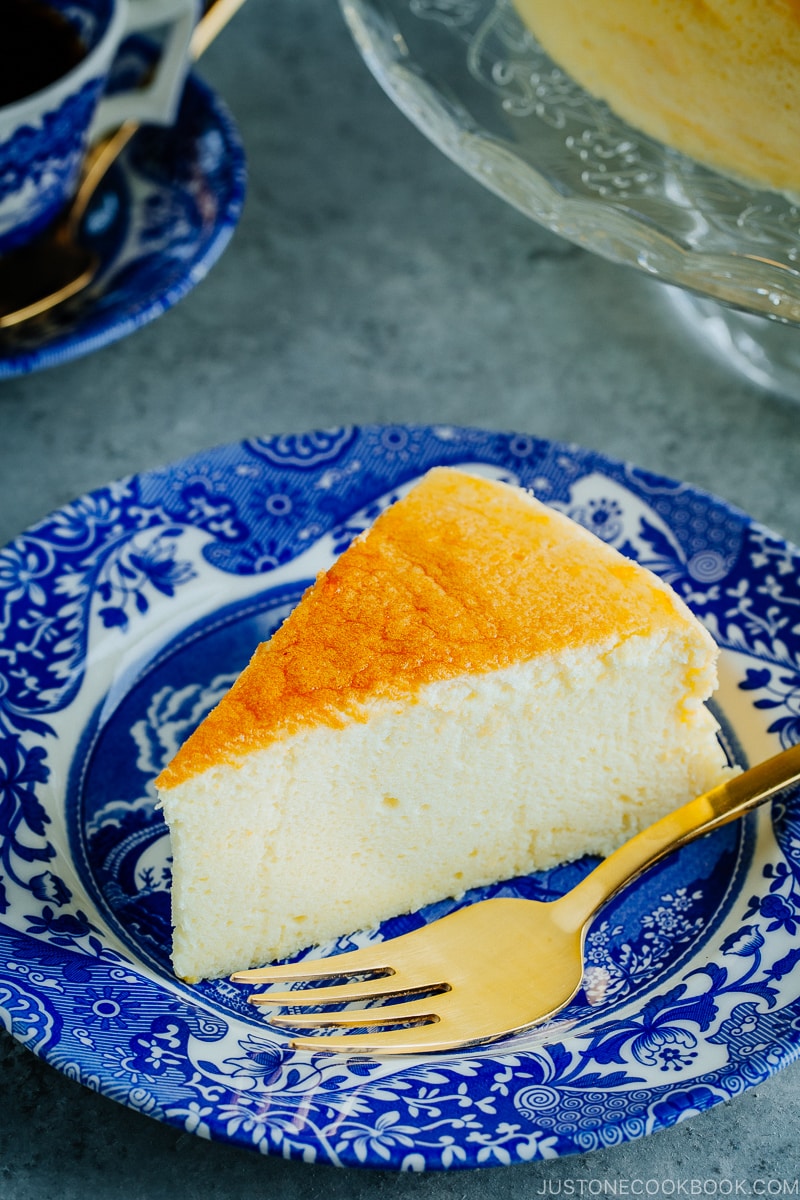
10 Helpful Tips to Bake Japanese Cheesecake
The instructions for this cheesecake are straightforward yet it does require some skills and care. The common difficulties include shrinking and cracking, which are mostly caused by the outcome of beating egg whites or the wrong oven temperature.
I had enough of my share of trials and errors before I finalized the recipe. So please take time to read through the tips and follow the directions closely so you’ll have a perfect outcome in your first try!
1. Measure Everything First

This sounds basic, but you must measure all the ingredients and prepare everything before you start making the cake.
Timing is very important here. Any missteps can easily alter the outcome of the cake batter and egg whites.
2. Make Parchment Paper “Strips”
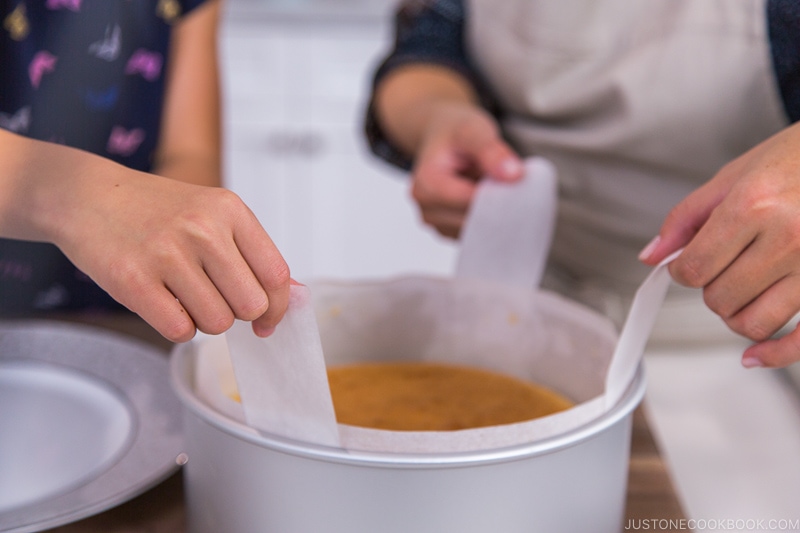
These strips of parchment paper are for pulling the cheesecake out of the cake pan after it comes out from the oven. Normally you will just flip and take the cake out, but it gets tricky for a cake with a jiggly, soufflé-like texture. With this trick, you don’t have to worry about the cake collapse on you.
3. Grease The Pan and Parchment Paper
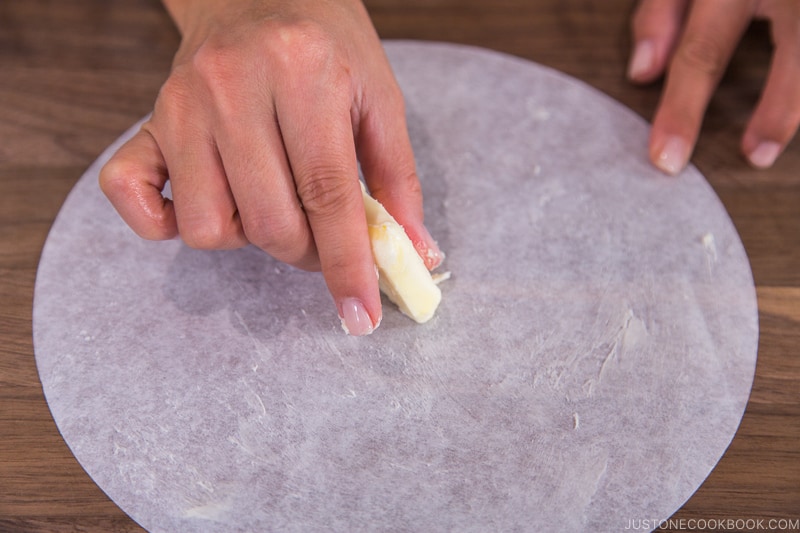
Grease the inside of the cake pan so that the parchment paper will stick to it nicely. And you will also need to grease the parchment paper that will touch the cake batter.
If the cheesecake is stuck with the parchment paper while rising, the cake will be pulled and end up cracking.
4. Use Double Boiler
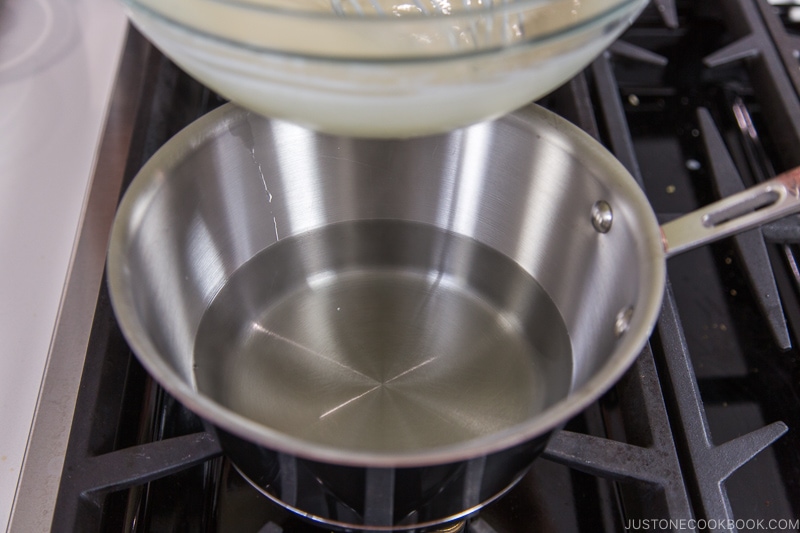
The double boiler method allows you to speed things up. You do NOT need to bring your ingredients (cream cheese, heavy cream, and egg yolks) to room temperature before making the cake!
Ingredients such as egg yolks mix better with the batter and rise more easily at room temperature. If you’re like me who tends to forget to take the ingredients out from the refrigerator ahead of time, you can count on a double boiler for mixing the batter.
5. Use Cold Egg Whites
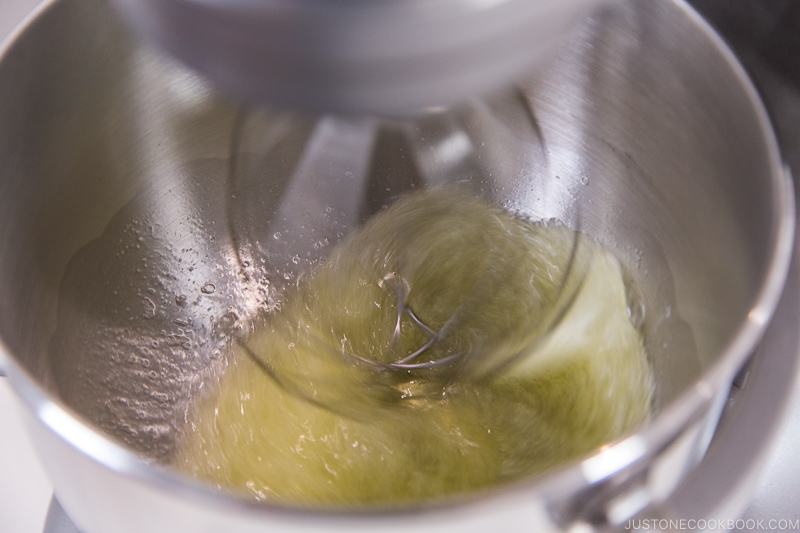
The Japanese method always uses cold egg whites (we even chill the bowl) to achieve a refined texture. I noticed American recipes call for room temperature egg whites to achieve the fullest volume instead. Maybe we look for different things? You can decide if you prefer cold or room temperature egg whites.
Some recipes call for cream of tartar but it is not a common product in Japan, so we do not use it for this recipe.
6. Beat Until a Firm Peak
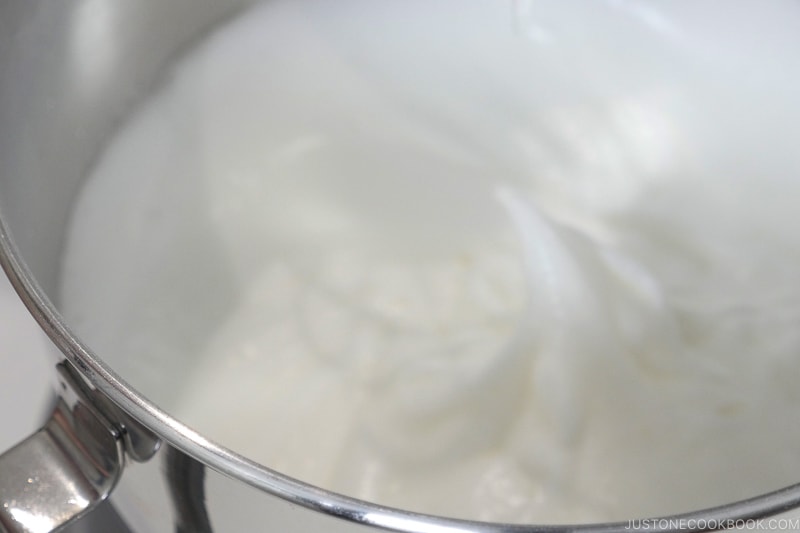
This is the most important (trickiest) part of making Japanese cheesecake. The beaten egg whites generate small air pockets in the structure of the cake, keeping the cake airy and fluffy.
When you beat egg whites, there are 3 stages: a soft, firm, and stiff peak. For this recipe, we are aiming for a firm peak.
When you lift the whisk and turn it upside down, the egg whites still cling to the whisk and hold their shape fairly well, but the tip of the peak folds back on itself.
I used to whip until a stiff peak formed and it worked fine. However, once in a while when I whipped a tiny bit too much, the cheesecake became a bit lopsided and cracked. Overall, it was a bit harder to control. Many soufflé cheesecake recipes in Japan call for both a firm peak or a stiff peak, so find what works for you, knowing this variable.
7. Fold in The Egg Whites
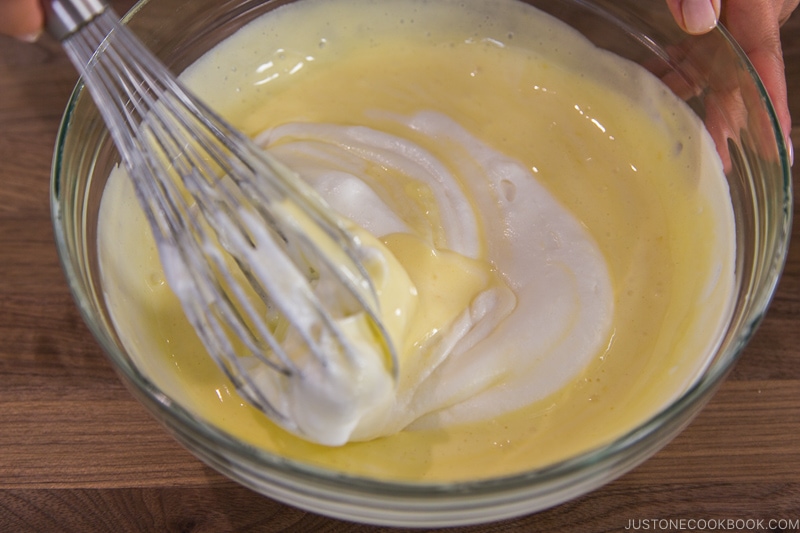
I learned that a whisk does a better job than a silicone spatula when you gently fold the egg whites into the batter. It’s very important to keep the small air bubbles so that the cake will rise higher without flopping.
8. Bake in Bain-Marie
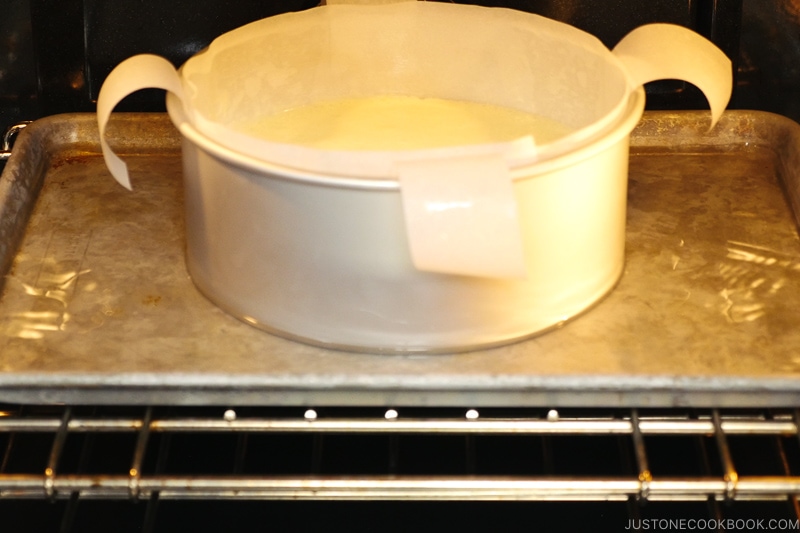
A bain-marie (ban mah-REE) is the fancy term for a water bath. We use this cooking technique to cook delicate foods like soufflé and custards. The hot water creates a gentle and uniform heat around the food as well as provides moisture inside the oven.
9. Bake at 2 Different Temperatures
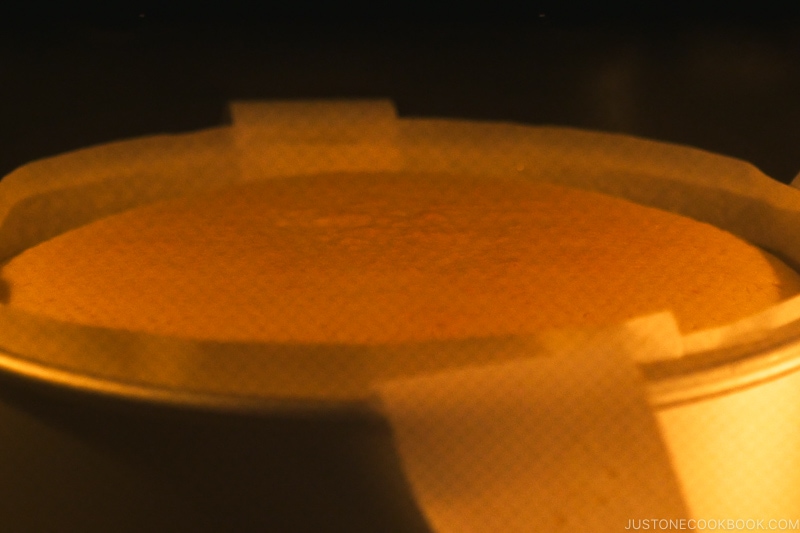
The oven temperature is probably the second most important factor for a successful Japanese cheesecake.
If the oven temperature is too high, the cheesecake will rise too fast, break the structure, and eventually crack. If the heat source is too close to the cake, the cake will also get big cracks. The taste will be fine, and after the cake cools down, the big cracks will be less obvious.
I preheat the oven to 350 ºF (180 ºC) first, but this is not the temperature for baking the cheesecake. Every time you open the oven to set up bain-marie or put the cake into the oven, the temperature drops significantly. Therefore we set the temperature higher.
Then when we put the cheesecake in the oven, we start baking at 320 ºF (160 ºC) and then reduce to 300 ºF (150 ºC) to make sure the cake is cooked through. My current oven is much bigger than my previous oven, and I had to test a few times to get the right baking time. If your oven is smaller than mine, you will probably need to reduce the baking time to 60 minutes. I have a “convection bake” option, but I used regular “bake” in this recipe so I could test the baking time for the majority of recipe users.
10. Cool Down Slowly
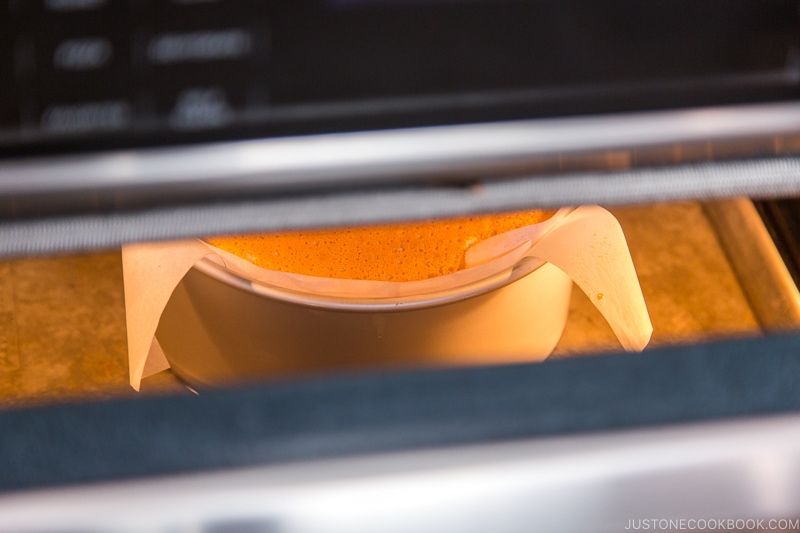
After baking in the oven, do not take out your cheesecake immediately. Let it cool down gradually by leaving the oven door ajar for a while.
This prevents a sudden change in temperature that could cause the cake to shrink or collapse. You want the cake to slowly come down to half the height, from 4 inches (tallest point) to 2 inches.
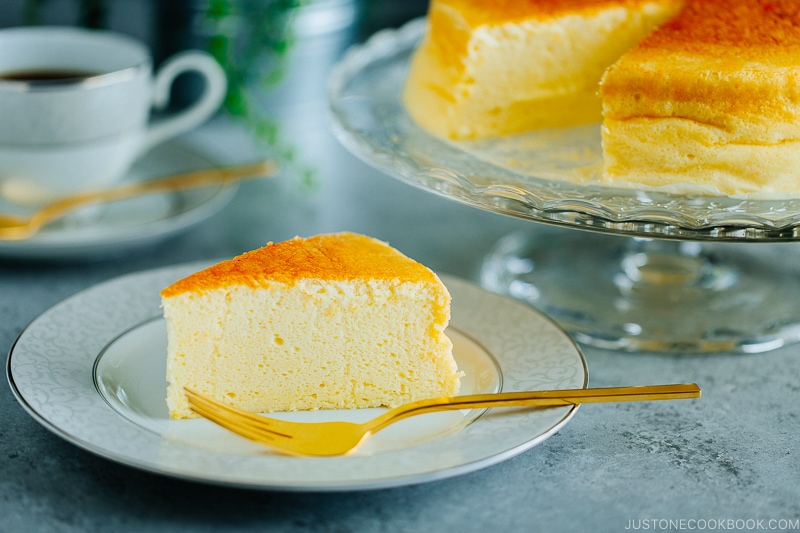
I’ve made the cheesecake countless times for parties or potlucks and it never fails to impress. It is truly a crowd-pleasing dessert that everyone loves. I hope you enjoy it too!
More Japanese Dessert Recipes You’ll Love
- Basque Burnt Cheesecake
- Matcha Basque Cheesecake
- Blueberry Cheesecake
- Pon de Ring Donuts
- Matcha Tiramisu
- Castella Cake (Honey Sponge Cake)
- Japanese Strawberry Shortcake
Disclaimer: In order to achieve the best SEO (search engine optimization) practice, we can no longer keep my original Japanese Cheesecake post (published on September 24, 2012) as it has the same recipe name as an updated version. Now the original post is redirected to this post. The original Cheesecake post has over 500 comments which will be very difficult for readers to go through when they look for an answer to similar questions they have. Therefore, we decided to create a brand new post. For those of you who really enjoyed my original Cheesecake recipe, you can still read the post by clicking here (and zooming in to read).
Wish to learn more about Japanese cooking? Sign up for our free newsletter to receive cooking tips & recipe updates! And stay in touch with me on Facebook, Pinterest, YouTube, and Instagram.
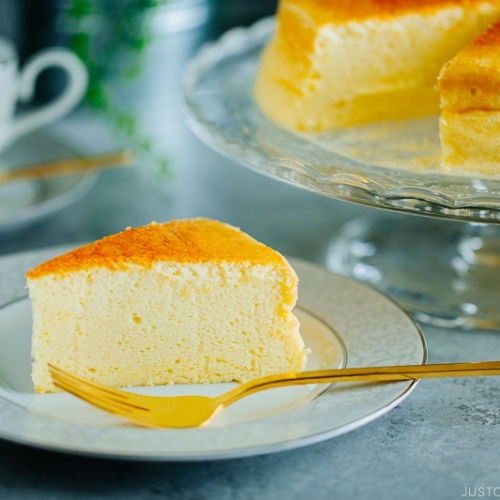
Japanese Cheesecake
Video
Ingredients
- 1 Tbsp unsalted butter (for greasing the pan and parchment paper)
- 6 large eggs (50 g each w/o shell) (10.6 oz, 300 g without shell)
- 10.6 oz cream cheese
- 4 Tbsp unsalted butter
- ¾ cup heavy (whipping) cream (¾ cup + 4 tsp, to be precise)
- 4½ Tbsp sugar (for the cream cheese mixture)
- ⅔ cup cake flour (weigh your flour or use the “fluff and sprinkle“ method and level it off; you can make your own Homemade Cake Flour)
- ½ lemon (for the zest)
- 2 Tbsp lemon juice (from ½ large lemon)
- ½ cup sugar (for beating the egg whites)
- 2 Tbsp apricot jam (for the glaze)
- 2 tsp hot water (for the glaze)
Instructions
Before You Start
- I highly encourage you to weigh your ingredients in metric using a kitchen scale for this recipe. Click on the “Metric“ button at the top of the recipe to convert the ingredient measurements to metric. If you‘re using a cup measurement, please follow the “fluff and sprinkle“ method: Fluff your flour with a spoon, sprinkle the flour into your measuring cup, and level it off. Otherwise, you may scoop more flour than you need. Please read the blog post for more detailed information that I shared about this recipe.
To Prepare the Cake Pan
- Use a 9-inch (23-cm) cake pan that is 4 inches (10 cm) high. Cut parchment paper to line the bottom and sides of the cake pan. Cut one circle 9 inches (23 cm) in diameter for the bottom and one rectangular strip 4 x 30 inches (10 x 76 cm) for the sides of the cake pan. In addition, cut two strips of paper 2 x 30 inches (5 x 76 cm) each. We will use these as “straps” to lift the baked cake from the pan.

- With 1 Tbsp unsalted butter, grease the cake pan and the parchment paper (for the bottom and the sides only; grease the paper on one side). You don‘t need to use all the butter.

- Place the two parchment paper “straps” crisscross on the bottom of the cake pan so they form an “X.” Allow the excess paper to hang over the sides. Then, line the bottom and sides with the greased parchment paper. The greased side of the paper circle should face up, and the greased side of the rectangular strip should face in toward the center of the pan.

To Preheat the Oven and Prepare a Double Boiler
- Preheat the oven to 350ºF (180ºC). For a convection oven, reduce the cooking temperature by 25ºF (15ºC). Note: You will be baking at 320ºF (160ºC). However, when you open the oven to place the cheesecake, you’ll lose some heat, so we’ll start off a bit higher.
- Prepare a double boiler: Set a medium saucepan filled with 2 inches (5 cm) of water over high heat and bring to a simmer. Once simmering, cover and reduce the heat to maintain a steady simmer.
To Gather the Ingredients
- Gather all the ingredients. Please note that it is very important to measure all your ingredients before starting. Separate 6 large eggs (50 g each w/o shell) into yolks and whites. Refrigerate the egg whites.

To Make the Cake Batter
- In a large bowl, add 10.6 oz cream cheese, 4 Tbsp unsalted butter, ¾ cup heavy (whipping) cream, and 4½ Tbsp sugar. Rest the bowl on the saucepan above the simmering water.

- Using a silicone spatula, mash the cream cheese and butter. Once they are melted, use a whisk to blend everything together. Remove from the heat.

- While whisking, add the egg yolks into the warm cream cheese mixture, one at a time. Make sure each yolk is blended well with the cream cheese mixture before adding the next one.

- Using a fine-mesh strainer, sift ⅔ cup cake flour into the batter. Whisk and blend together.

- Then, pass the batter through the same fine-mesh strainer into a clean large bowl. This creates a silky texture for the batter.

- Add the zest of ½ lemon into the batter. Make sure you only zest the flavorful yellow part and not the bitter white pith. Into a separate small bowl, squeeze the juice from the lemon. Measure 2 Tbsp lemon juice and add it to the batter. Whisk well to blend and set aside.

To Set Up the Bain-Marie
- Put the baking sheet inside the preheating oven and pour in hot water until it is halfway up the sides or ½ inch deep. Close the oven door.

To Beat and Incorporate the Egg Whites
- Add the cold egg whites into the dry, clean mixing bowl of a stand mixer. Make sure there is no oil or water in the bowl. If you have space in your refrigerator, I highly recommend keeping the mixing bowl cold until you’re ready to use it. Start whisking on medium speed (Speed 4) until the egg whites become opaque, foamy, and bubbly, about 2 minutes. Then, slowly add ½ cup sugar, one-third of it at a time, while the mixer runs.

- Once you’ve added all the sugar, increase the mixer speed to high (Speed 8–9) and beat the egg whites until you have firm peaks. When you lift the whisk and turn it upside down, the egg whites should still cling to the whisk and hold their shape fairly well, but the tip of the peak folds back on itself.

- Using a hand whisk, mix one-third of the egg whites into the cream cheese mixture until incorporated. Then, gently fold another one-third into the mixture.

- Lastly, pour the mixture back into the mixer bowl (with the last one-third of the egg whites still in it) and fold very gently until just combined.

- Pour the mixture into the cake pan all at once, avoiding air pockets while pouring. Tap the cake pan a few times on the kitchen counter to release any air pockets in the batter.

To Bake the Cheesecake
- Open the oven and place the cake pan onto the baking sheet with the bain-marie. Reduce the oven temperature to 320ºF (160ºC)—25ºF (15ºC) lower for a convection oven—and bake for 70–75 minutes. Then, reduce the oven temperature to 300ºF (150ºC) and bake for another 10 minutes, or until the top is golden brown. To test if the cake is done, open the oven door slightly and insert a skewer into the cake. If it comes out without a wet liquid batter, it‘s done.

To Cool
- Turn off the oven and leave the oven door slightly ajar for 15–20 minutes with the cake inside. If you take the cake out immediately to the kitchen counter, the sudden change in temperature could cause the cake to collapse. You want the cake to slowly shrink down to half the height, roughly from 4 inches to 2 inches high. After 15–20 minutes, remove the pan from the oven. Gently pull out the cake from the cake pan using the two parchment paper straps (with help from another set of hands).

- Place the cake on a plate. Remove the parchment paper around the sides of the cake (but leave the bottom paper). Combine 2 Tbsp apricot jam and 2 tsp hot water in a small bowl. Brush the apricot mixture over the top of the cheesecake. Let cool to room temperature.

To Serve
- You can serve the cake at room temperature (fluffiest!) or chill the cake for 1–2 hours before serving.

To Store
- You can store the cake in the refrigerator for up to 3–4 days or in the freezer for 3–4 weeks. Defrost the cake overnight in the refrigerator. The cold cheesecake is dense, so leave it on the counter until just chilled or at room temperature before serving.
Notes
- Make sure your beaters and mixing bowl are clean and dry. A speck of oil, water, or egg yolk on either one can minimize the volume of the beaten egg whites.
- Avoid plastic bowls—even clean ones may hold oily residue that can affect the successful whipping of the egg whites.
- Use a bowl that’s wide enough to keep the beaters from being buried in the egg whites.
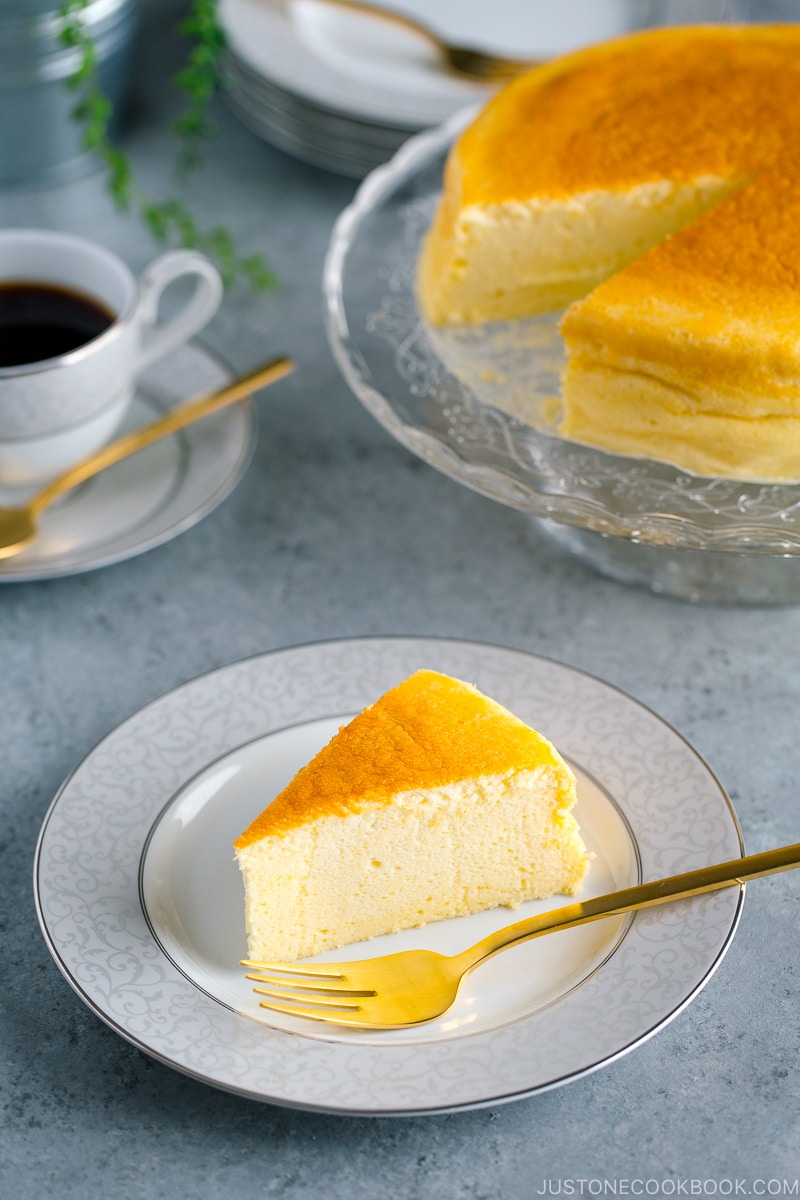
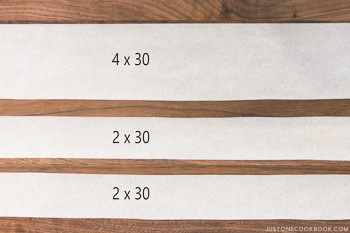

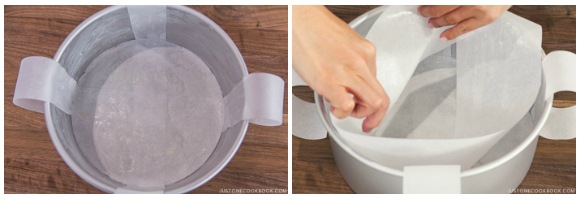
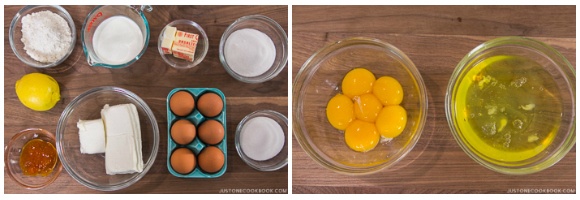
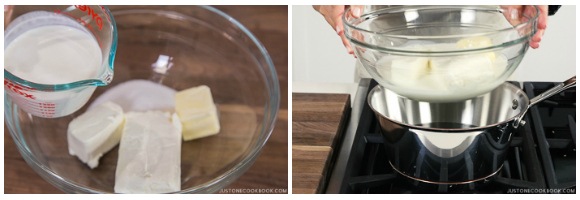
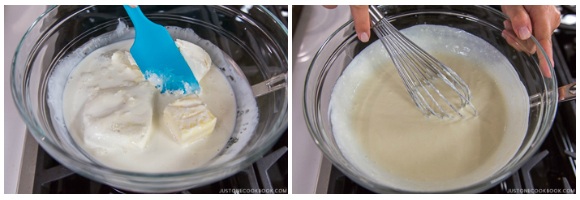
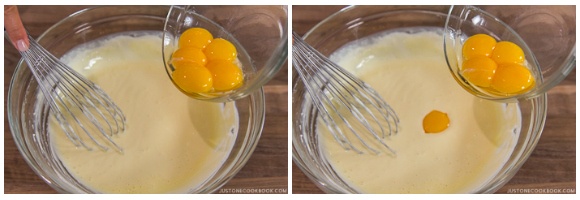

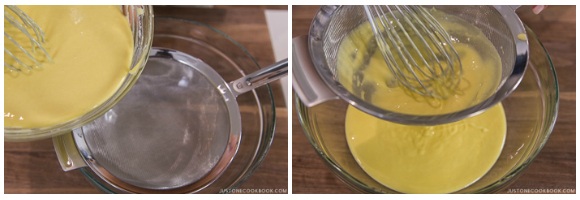

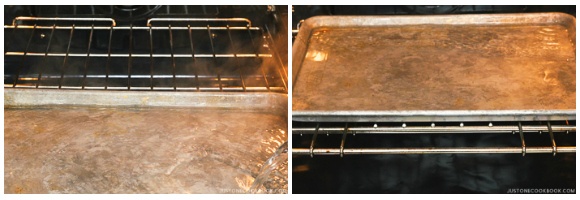

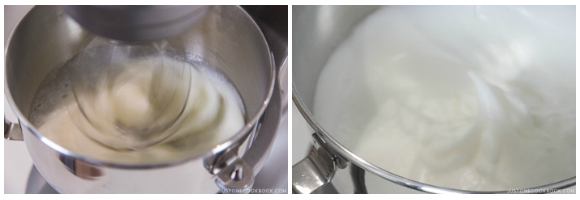
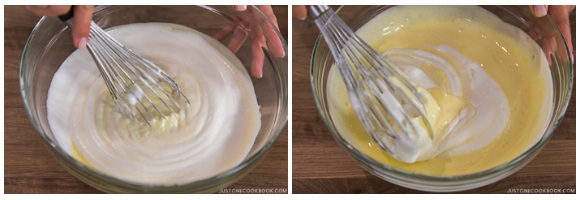
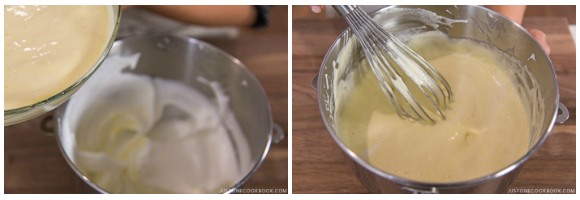
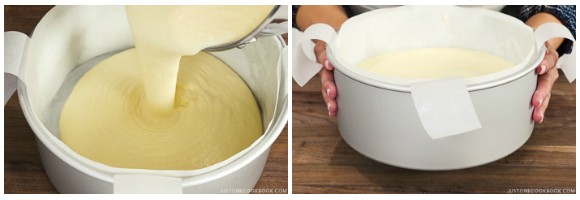

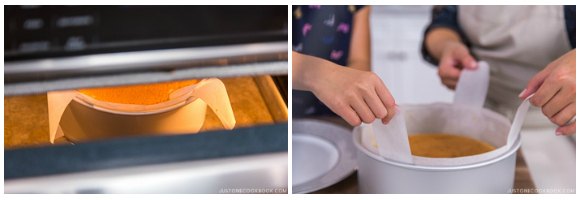

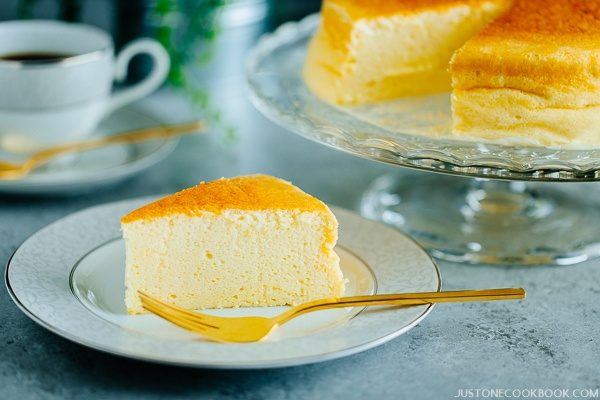

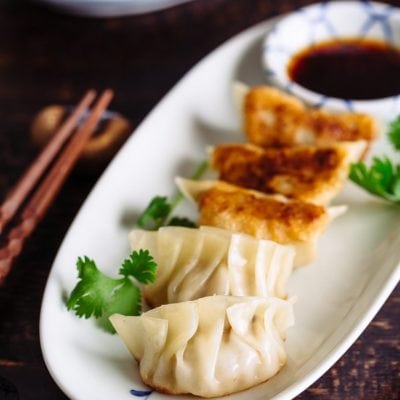
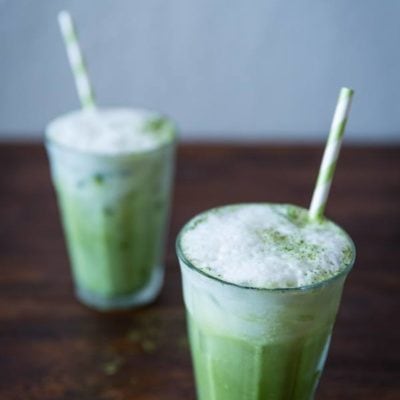
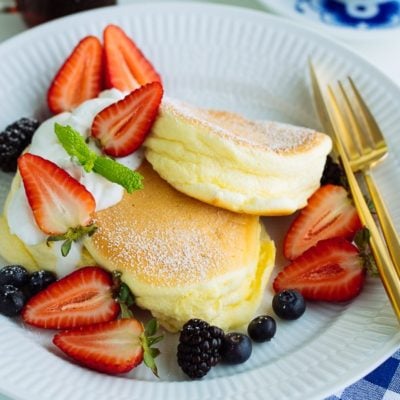
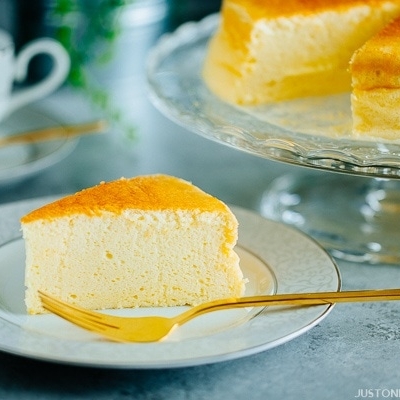
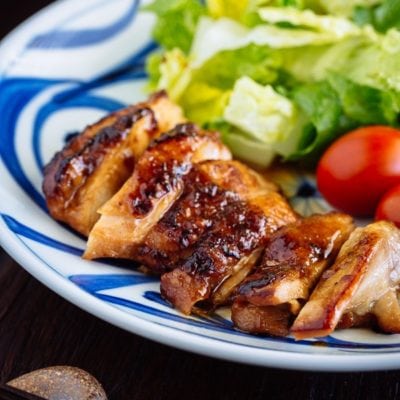
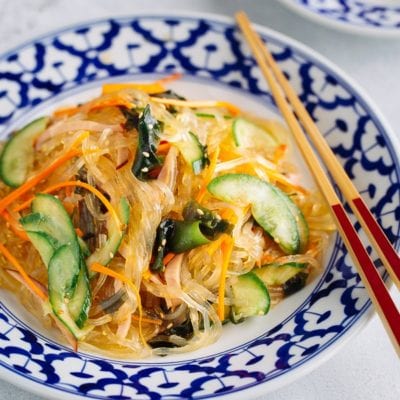
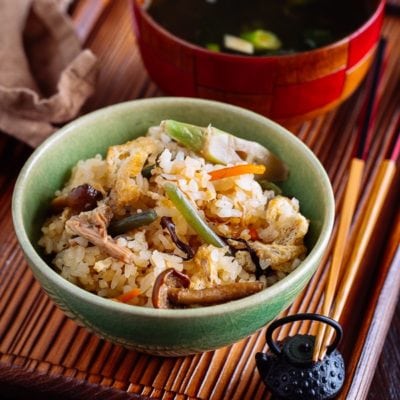
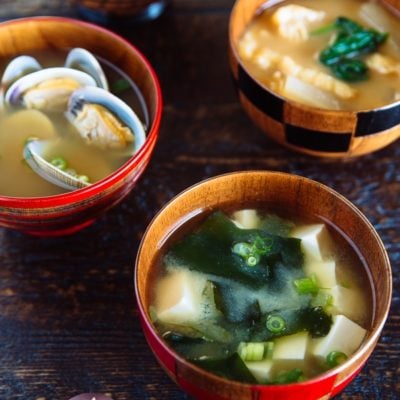


This video is so mesmerizing!!! (☆_☆)
Thank you Keena! 🙂
If your audience is directed at Americans, it would be nice if your measurements were in American in the recipe that I would be printing.
Hi Roberta! Many of my blog readers are Americans and I live in the U.S. as well, but my blog is for worldwide audience and more than half of my audience uses metric measurement. My older posts from 2011 uses cup measurements but I’ve included metric measurements for the past 3 years at least.
For a Japanese cheesecake or baking in general, I highly recommend using a kitchen scale because it’s one way to make sure my recipe works. 1 cup flour can be different for each person if you measure with a cup measurement (I also wrote how you properly measure if you want to use a cup measurement in my FAQs (https://www.justonecookbook.com/faqs/)).
I believe even slight difference in measurement makes a big difference in outcome especially in a baking recipe like this Japanese cheesecake (vs. banana bread, which I believe doesn’t have to be as perfect).
Anyway, please understand “9 Tbsp.” cake flour is way more accurate and close to 80 gram than using a “cup” measurement. Hope this makes sense…
Hi Nami
Thank you so much for your recipe in metric measurement which I really find it most helpful instead of cups measurement. I am from Malaysia and more than half the world is using weighing scale for baking. It is so convenient and accurate as well.
I baked Japanese Cheesecake before and it was a huge success. However, I would like to try out your recipe this weekend. I will write a review on that soon.
Best Wishes & Cheers!!!
Hi Christina,
Thank you so much for your kind feedback. We’re glad to hear that you appreciate for the recipe in metric measurement.
I hope your baking will be successful and enjoy this Japanese Cheesecake recipe!😊
Hi Nani!
how could i adjust the ingredients for a 6-inch pan? is it safe to use 2/3 of your original recipe? thanks, i’m really excited to try this out!
Hi Vicky! Please read Cake Pan under “Equipment” section for the portion to adjust your ingredients to fit 6 inch pan. 🙂 Hope you enjoy!
Hi Nami, after adding all the sugar into the egg whites, how long do we need to beat at high speed (speed 8-9) to achieve “soft” to “medium” peaks? I have the same mixer as yours.
Thanks so much for all the details. I am going to make this for my birthday cake!
Hi Xin! It really depends on the egg whites and their condition (like temperature etc), so don’t focus on the time much. I think that’s one way you may end up failing because it’s not important. Pay attention to the egg whites. If you’re not comfortable, work on shorter increment (imagine, if you use hand whip, you will rest in between a lot, so it’s completely okay you take time to whip egg whites). The important part is when you lift the whisk the egg whites look like holding the peak but flop to one side in a second. That’s what you’re after. So whip and lift the whisk to check until you get there. If you whip up a little longer than it should, it’s still okay. Your cake won’t fail. There are some “ranges” of egg whites that will go succeed. It’s really good practice to see how egg whites change… Hope this helps!
And Happy Birthday!!! I am sorry I couldn’t write you back sooner.
Thank you Nami for the reply and all the detail steps you have written on the recipe. I have successfully made the cheesecake and my family absolutely loved it!
Hi Xin! You’re very welcome! I’m so happy you and your family enjoyed it. 🙂 Thank you for your feedback!
Hi Nami,
I’m a long-time reader of your blog and love your recipes. I just made this recipe using half the portions and a 8″x2″-inch cake pan (unfortunately I don’t have a 4-inch pan) and I also substituted the cream cheese with Neufchatel to feel slightly less guilty about eating it 🙂 Everything came out great! In case anyone else is in a situation like me, I found that a baking time of 35 minutes total was sufficient for the thinner cake. Thanks again!
Hi EH! Thank you so much for reading my blog for a long time!
Wow thank you for this information! I never tried Neufchatel before (for those who don’t know: http://www.thekitchn.com/whats-the-difference-between-n-143447). I’m so happy to hear it came out well too. Thank you for sharing with me and other JOC readers! AWESOME!!!!
Yes, if you use 8 inch cake pan with the half portion of the recipe, it will be thinner cake. My friend wants to try with a small individual cake too, and 4 inch cake size sounds like a good size… 🙂
Hi Nami, this recipe makes a lot of cheesecake and we’re not sure we can finish it on time before it goes bad. My question is can I put a portion of the cake in the freezer? Will the cheesecake change in texture?
Hi Lyna! Sorry for my late response. Yes, you can freeze the cheesecake for up to a month, and won’t change the texture if you properly defrost it (but it won’t be as good as you freshly made it). 🙂
Have you tried pressure cooking this in a spring pan on a trivet?
Standard cheesecake comes out great, even southern corn bread. The corn bread comes out almost cake like, very moist, airy, springy.
Not sure the timing on this because of the eggs.
Non, I haven’t tried cooking this recipe in a pressure cooker. 🙂 I know you can make the cake in PC but not sure you can make souffle cheesecake. 🙂
Hi Nami, I have just baked your latest recipe of souffle japanese chesecake, it is awesome!!
It’s really light yet creamy to taste, I can’t describe it but its heavenly to taste.
Best of all, its so easy to make following your video. Thank you so much, you are doing an awesome job. I love your blog.
Next, I will cook you beef gyudon recipe for dinner
Hi Wai See! Thank you so much for trying this recipe already and I’m really happy to hear yours came out well. Have you eaten the cake before you slice? It makes fluffy sound! I actually like it without chill too. It is the fluffiest stage of the cake, I think. 🙂 Glad to hear the video was helpful. I worry that we focuses on the aesthetic of the video scene so much that we forget adding important explanation of the process (we don’t want to put too many words in scene). Thank you for your feedback. Hope you enjoy gyudon too! 🙂
Hi Nami! I just made the recipe, and the cake cracked in the middle. What can it be the reason?
Hi Carla! Thank you for trying this recipe already! From your description ‘crack in the middle’, I could almost tell the main reason is that 1) beat the egg whites too much (the meringue was too stiff and when it rise it couldn’t hold and lose the structure inside the batter), OR 2) the heat source from the top is too close (or too hot), so the top area gets cracked. Was the top of your cake much darker? If so, this could be your reason. If still light color, then most likely 1) is your reason. I mean, it’s possible that you didn’t “fold in” the egg whites and broke the air pockets etc, but I wasn’t there and couldn’t tell. Assuming that you did that part correctly, those two are my guess. What do you think? When the cake slowly went down, how was the crack? Was it lopsided a little? That’s another key that you beat egg whites too much. Otherwise, crack kind of becomes big wrinkles when the cake is cooled. Taste should be okay… 🙂
Hi Nami! I think is number 1 reason. The taste is so good as all your recipes! I tried Also the japanese shortbread cookies!! Thanks for all your recipes!
Have a great x-mas!
Do slow increment of beating before you get too far. 🙂
Thank you for trying my recipes! Happy Holidays to you too! xo
Thank you for the recipe it tastes very good my sister in law love the taste so much.
I have made Japanese cheesecake from your recipe second time today. My first time it crack on the top so I reduce the temperature a bit so it just look perfect today. But there is so many large air bubble in the cake I couldn’t get smooth texture cake like yours. I’m not sure is this because I beat egg white for too long or not. I did follow your suggestion of soft medium peak but not sure where I got it wrong.
Hi Kittiya! Thank you for trying this recipe and for your kind feedback! I’m happy to hear your sister in law enjoyed it, too! Hmmm, large air bubbles…When you pour the batter, did you pour in one location and try not to include air pockets?
The cake turned out beautiful, my husband said “it’s a keeper.” The instructors were clear and precise, I like that. I’m always looking for new and different recipes!
Hi Angela! Thank you so much for trying this recipe and for your kind feedback! So happy to hear you and your husband enjoyed it! 🙂
Wow! I will have yo try the updated recipe! The previous recipe was a hit at home!
Hi Mei! I hope you like this one, as I really do. Let me know what you think. I’m interested in feedback from my readers who’ve tried the original recipe. Hope this one is better in terms of baking and taste! 🙂
Hi! I was wondering if it is possible to use greek yoghurt as a substitute for heavy cream? And how should I scale this recipe to use just an 8oz block of cream cheese? Because we are trying to just clear the block of cream cheese in the fridge haha. Thank you in advance!
Hi Shanon! I am sorry but I’m not sure as I’ve never sub heavy cream for Greek yogurt. If you decide to give it a try let us know! 🙂
It seems like a cloud. ☺
Oh that’s a good way to describe it! So delicious and fluffy!
wow, so excited to make this on Christmas, thanks for the recipe, i will try this, thanks for the tips, it really helps a lot, im not a good baker.=(
Merry Christmas in advance.
Hi Juh! I hope you will enjoy this cake and good luck! 🙂 Happy Holidays to you and your family!
Thank you so much for this recipe! I followed the instructions perfectly and it was a hit. Even my mom, who normally doesn’t like Japanese cheesecake, loves it. I was wondering whether matcha can be added to this recipe? If so, how much, and when would I add it? Thanks!
Hi Bee! Thanks for trying this recipe! So glad your mom enjoyed it. You can try You can add 2 Tbsp matcha to start.
Very nice recipe! thank you !
Thank you so much Marlène! 🙂
What an incredible amount of detail and explantions you include! I have never make a cheesecake but I am confident I can follow your directions for a marvellous result!
Hi MPaula! Thank you so much for your kind words. There are many Japanese Cheesecake recipes out there with beautiful pictures but I wanted to share some helpful info, especially for beginner bakers as I used to be one not a long ago. 🙂 Hope you’ll give this recipe a try! xo
Going to the grocery store right now!
Hi SeaDee! Hope you enjoy this cheesecake! 🙂
It’s almost done (in the final 20-minutes in the oven!
I don’t have a 4-inch tall cake pan, so that piece of parchment around the pan is holding it all in. I turned the oven off at 65 minutes since the top was already golden brown and the skewer came out clean (didn’t want to over-bake.
I’ve been wanting to try baking some Japanese-style cakes ever since my entire family (15 of us) went to Japan this past June to visit relatives (my Mom is also from Yokohama!). I had discovered your blog a few months before that trip and made sure to buy some salted cherry blossoms to make your pudding and cookies, and some macha too!
Thank you for all the helpful tips and recipes. We will be making your daifuku and mochi when we gather for Christmas!
Hi SeaDee! I hope you enjoyed this cheesecake! Yes, the parchment paper holds it okay, and I actually used 2-inch tall pans that I had for a while. But the shape of the cake looks nicer when I switched to 4 inch, hence my recommendation of the 4 inch tall cake pan. 🙂
Wow 15 of your family went to Japan together? That must have been such a fun trip!! And your mom is from Yokohama too? How cool!
Hope you will have fun making daifuku and mochi recipes during Christmas! Thank you for writing! 🙂
The cheesecake came out well, I think (I have nothing to compare it to) but everyone who had a piece liked it! The parchment held up fine. I used lemon juice from a bottle, orange zest, and a berry jam (wanted to use what I already had). There’s a picture of it somewhere on Twitter with #JustOneCookbook.
Thank you again for your blog!
Hi SeaDee! Oh, sorry I’ve been super busy day today. I’m gong to check twitter now! Thank you for making this cake! 🙂
Omg! So good! I don’t like cheesecake but this is very different. It’s almost like a tree leches angel food cake that has cheesecake flavor. I had a small amount of cracking at the top but it turned out perfectly
Hi Nela! Thank you so much for your kind feedback! 🙂
Never had Japanese cheesecake before and never made meringue before. This took me 2.5 hours not including bake time. Came out quite well for my husband’s birthday today. I do wish this had much more of a cream cheese flavor; it tasted mainly eggy and lemony, which are nice but not cheesy. Instead of the glaze, I wrote on the cake with a paper stencil and dusted with powdered sugar. Thank you for sharing all the tips! Unless I missed it, it’d be helpful to post a tip on how to cut the cake cleanly, as it was crumbling in chunks when I cut it. Maybe because I didn’t refrigerate it first?
Hi Kim! Happy Belated Birthday to your husband (and I’m so sorry for my late response)! Thank you for trying my recipe and your feedback.
Unlike NY Cheesecake, this has the souffle aspect of it (which is why it’s called Souffle Cheesecake in Japan)… so the eggs are a big part of this cake.
Oh yes, you should chill the cake for 1-2 hours before serving as I mentioned in the recipe because the texture (after cooldown) is very jiggly. 🙂
Hi Nami,
Having just made this cheesecake, it is certainly light and fluffy, though it seems to be lacking some punch taste wise, anything you can recommend to bring out some more of the cheese flavor?
Hi Daniel! I feel like it’s enough cream cheese flavor… maybe more lemon juice/zest or vanilla or a pinch of salt? You can increase the sugar too, since the sweetness level is Japanese/Asian sweetness level.